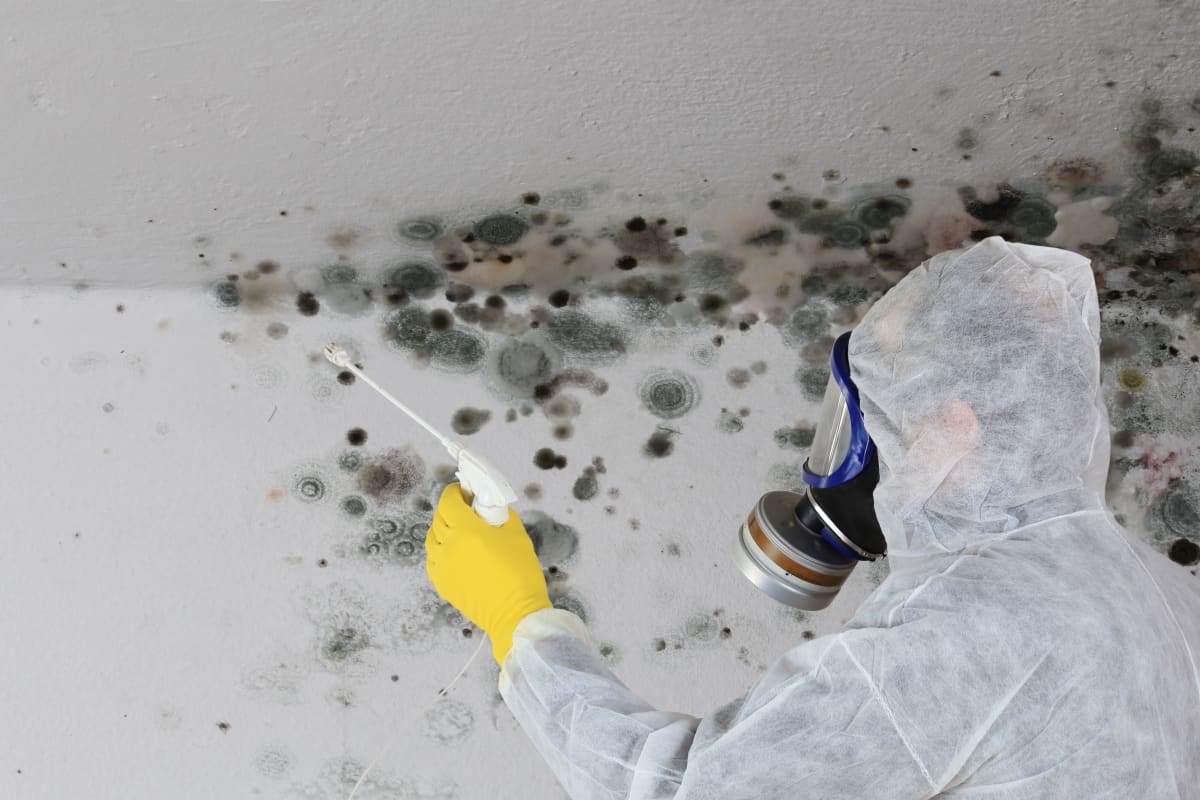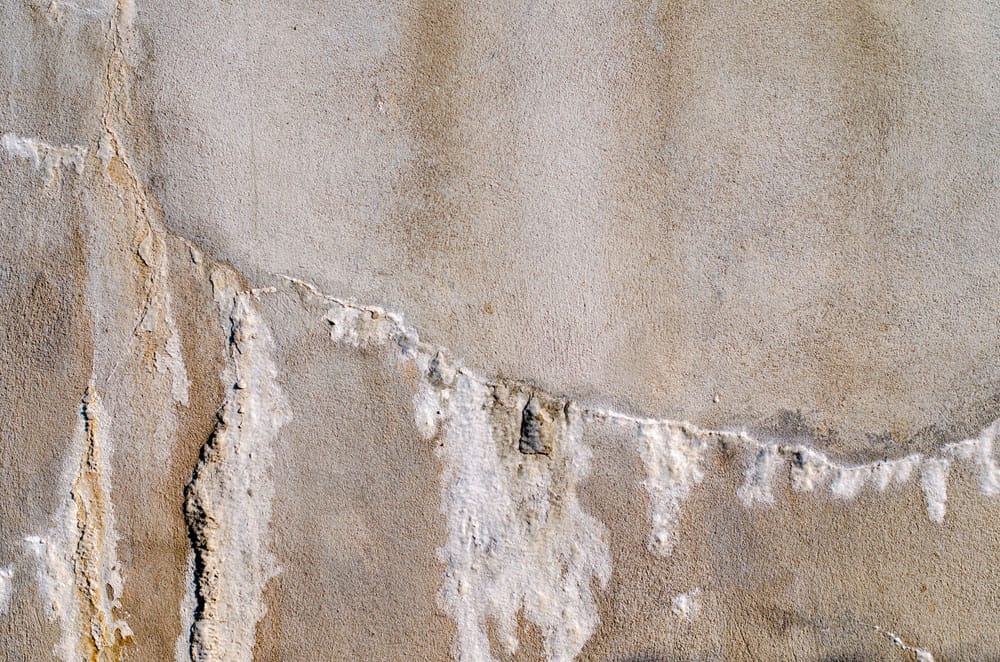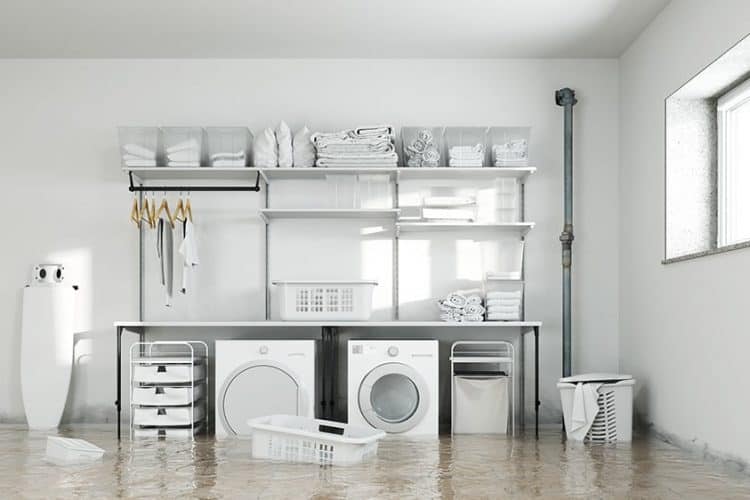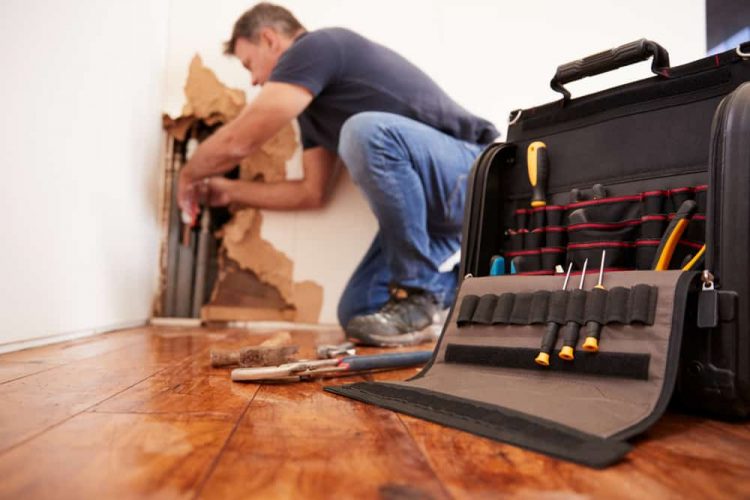
What is white mold? Do you think you have white mold in your home? Here’s a guide on what white mold looks like and what you need to know before taking action against it.
What Does White Mold Look Like?
Despite its name, white mold is not necessarily white. MasterClass defines it as a powdery fungus made up of different fungal species. It can appear white, green, or gray depending on the type of surface it has infected. You can typically identify it with a water test. Spritz the signs of the mold with water. If any of the pieces dissolve, it’s salt and not mold. If the questionable substance remains, you are likely dealing with mold and should call a mold removal and remediation company, like 1-800-Water Damage.
White Mold vs. Black Mold
Typically, when people think of mold, they think of black mold. So, what is white mold, and how does it differ from black mold? Real Homes describes white mold as a light dusting of mold on contents or surfaces. In comparison, the Centers for Disease Control and Prevention (CDC) describes the growth of black mold on wet or damp material. For black mold to grow, it needs constant moisture from sources like leaking water, infiltration, or flooding. White mold is usually the result of higher humidity or airborne moisture.
White mold can threaten structural integrity, but black mold can cause more severe damage. Black mold can penetrate the surface, making it tougher to remove. Black mold can cause more severe health issues, including lung infections, according to the CDC.
Health Concerns of White Mold
The health risks with white mold are not as severe as black mold, but they’re still there. They include respiratory infections, dizziness, allergic reactions, headaches, and eye or skin irritations, according to MasterClass. Experts with MasterClass say White mold is particularly dangerous for those with asthma. Like any illness, symptoms can vary by person. One person may only have the occasional runny nose, while another experiences all the symptoms.
With these health risks, once you spot white mold in your home, you’ll want to contact a professional to get it taken care of as soon as possible.
What Causes White Mold?
Like most molds, white mold thrives in areas with high moisture — for example, showers, crawl spaces, basements, and leaky walls. The mold can continue to spread if it has a reliable food source. It feeds on cellulose, which is starch and sugar. These substances are in most wood products, making floors, beams, wood furniture decks, and ceilings highly susceptible to white mold.
White Mold Vs. Efflorescence
White mold is sometimes confused with efflorescence because of where you can find the white mold and its coloring. Efflorescence is dissolved salt deposits on the surface of a porous material, such as brick or cement. It commonly occurs after the material installation uses water and then the water evaporates. Rainwater can also be a source of efflorescence.

Efflorescence vs. White Mold
To avoid paying for a mold test, the International Association of Certified Home Inspectors recommends testing the substance to determine if its efflorescence or white mold.
- When pinched, efflorescence will turn into a powder, while mold will not.
- Efflorescence forms on inorganic building materials (brick or cement), compared to white mold, which forms on organic substances (wood). However, mold can consume dirt on brick or cement.
- Efflorescence will dissolve in water, while mold will not.
- Efflorescence is almost always white, yellow, or brown, while mold can be any color imaginable. It’s not efflorescence if the substance in question is purple, pink, or black.
How to Get Rid of White Mold
Now that we understand what white mold is, how do we get rid of it? You will want to leave this up to the professionals. However, you can start by ventilating the area where the mold is growing by opening windows or using a dehumidifier. Anytime you plan to touch what you think is white mold, make sure to wear gloves and a mask. A mold removal and remediation company will also help prevent cross-contamination to other areas of the home..
Call 1-800-Water Damage for Help
Our mold remediation specialists use state-of-the-art technology, equipment, and advanced methods to halt mold growth and minimize the possibility of recurring growth. So don’t wait and let the problem grow; submit a form or call us today.



